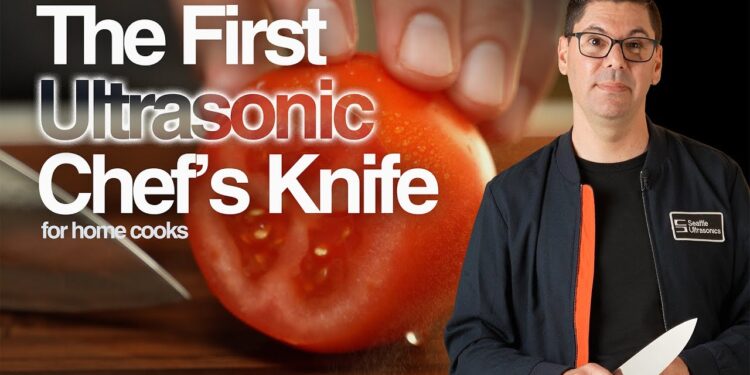Seattle culinary technologist Scott Heimendinger has released what he claims is the world’s first ultrasonic chef’s knife, combining traditional Japanese steel with electronics that produce over 40,000 vibrations per second to reduce cutting effort.
The C-200 knife from Seattle Ultrasonics features an 8-inch san mai AUS-10 steel blade paired with a handle containing piezoelectric crystals that create ultrasonic vibrations, making the blade behave sharper than its physical edge would suggest.
Heimendinger, who previously served as director of applied research for Modernist Cuisine and founded sous vide startup Sansaire, spent five years developing the product after raising $2 million in pre-seed funding.
The knife requires users to hold a power button while cutting, the only operational difference from traditional chef’s knives. At $399, it costs significantly more than conventional high-end chef’s knives, which typically range around $170 according to Food & Wine’s rankings.
To validate his claims, Heimendinger created the “Quantified Knife Project,” using a robotic arm nicknamed “J Robot Choppenheimer” to test 21 popular chef’s knives with identical cutting motions across various foods. The testing generated 100,000 data points measuring factors like edge angle and retention.
“If I was gonna try to make a knife better, first I needed to understand, ‘better than what?'” Heimendinger said, drawing on his background as a former Microsoft program manager who worked on Excel.
The data demonstrated that ultrasonic vibrations require less downward force when cutting through tomatoes, carrots, bread, and other food items compared to traditional knives.
Heimendinger criticized the previous wave of “smart kitchen” products that added WiFi connectivity without improving functionality. “If it didn’t make the tool work better, I would have abandoned the product, because it’d be dishonest,” he said.
The knife utilizes a global supply chain, with Japanese steel fabricated into blades in China before assembly with electronics and packaging in Malaysia. Tariffs have affected costs, though Heimendinger follows the Eames design philosophy to “make the best for the most for the least.”
A wall-mounted charging tile sells separately for $150 or can be bundled with the knife for $499. The knife is currently available through the Seattle Ultrasonics website.
Future products will include bread knives, santoku knives, and vegetable cleavers, though paring knives present challenges due to size constraints for the electronic handle components.
Heimendinger envisions broader applications for ultrasonic technology in kitchen tools, including a patent-filed ultrasonic ice cream scoop designed to reduce friction and break up ice crystals.
“I think in the long term, the sonification of the kitchen could be a thing,” Heimendinger said, though he acknowledged it will “take years to get through all of that, and there’s a lot to do in knives before we even get there.”







